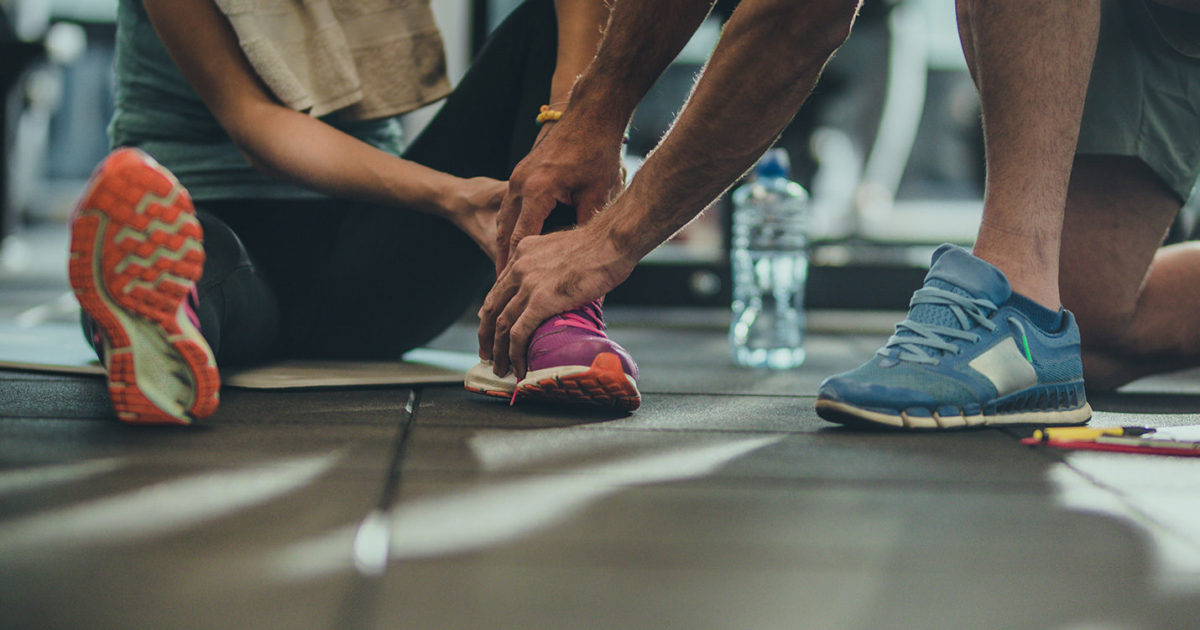Sports Medicine Timeout
UT Health Austin sports medicine specialist discusses the most common sports injuries
Reviewed by: Martha Pyron, MD
Written by: Lauren Gerard

While it’s healthy to stay active and exercise regularly, injuries do happen. Sometimes, it can be difficult to know the best approach for treatment and recovery.
Martha Pyron, MD, a sports medicine specialist in UT Health Austin’s Sports and Injury Clinic within the Musculoskeletal Institute discussed the most common sports injuries.
Sprains
Sprains are soft tissue injuries that involves the stretching or tearing of ligaments, the tough bands of fibrous tissue that connect two bones together in your joints.
“The most common sprain seen in sports-related injuries is an ankle sprain,” shares Dr. Pyron. “What this means is that the ankle turns and your weight is distributed onto the outside, or in some cases even the inside, of your ankle, causing some tearing of the ligament.” Sprains can vary from a minor partial tear to a more severe full tear of the ligament, which should be evaluated by a physician.
“Sometimes sprains are also associated with bruising of the bone or other injuries that typically occur at the same time,” says Dr. Pyron. “Most of these types of injuries do resolve within a couple weeks, but it’s important to avoid activity until the pain is gone and ease back into activity slowly.”
Overuse Injuries
Overuse injuries, such as tendonitis, involve the inflammation or irritation of a tendon due to repetitive movements occurring in the same area.
“These injuries are very common when you don’t give your body enough recovery time after an event before you participate in another activity using those same muscles again,” explains Dr. Pyron. “Overuse results in small tears in the muscles or tendons that are often accompanied by pain in the area.”
The best way to heal and prevent future tendonitis is to incorporate a really good recovery after strenuous activities. Stretching beforehand and improving technique and form in your activity could also help alleviate some of the stress on the muscles and tendons you are using the most in your sport.
Strains
Strains are injuries to muscle fibers or tendons, which anchor muscles to bones. Strains are also called pulled muscles.
“Most muscle strains occur when a muscle has been stretched beyond its limits,” says Dr. Pyron, “if you are really tired or your muscles are fatigued and you try to continue your activity, your muscles are more likely to react slower and with less strength, putting you at risk for injuring yourself more easily.”
With a strain, you typically experience pain and tenderness, especially while moving or contracting the affected muscle. “A proper warm-up before your activity as well as following a program aimed to strengthen your muscles will help you avoid these injuries in the future,” explains Dr. Pyron.
Injury Prevention
“Sometimes preventing common sports injuries is beyond your control,” shares Dr. Pyron. “But many times, sports injuries are preventable.”
To help prevent common sports injuries practice the following:
- Warm up before your sport or activity, including stretching, to loosen your muscles
- Gradually increase weight and resistance in preparation for intense exercise
- Never push yourself beyond your limit
- Use the correct form or technique to avoid putting unnecessary stress on your tendons and ligaments
- Avoid direct hits or harsh contact where possible to maintain stability in the joints
- Stop and rest if you experience any pain or major fatigue
- Always give yourself plenty of time to recover after an intense activity
When to See a Doctor
If you are experiencing extreme symptoms or symptoms that don’t subside after rest and recovery, it’s important to make an appointment with a healthcare provider.
Be sure to see a doctor if you are experiencing any of the following:
- Deformities in the joint or bone that may indicate a dislocation, broken bone, or fracture
- The inability to bear weight on a limb without extreme pain or without it “giving way”
- Excessive swelling and pain
- Changes in skin color beyond mild bruising
- Prolonged symptoms after a few days of RICE - rest, ice, compression, and elevation
To learn more about the Sports and Injury Clinic, visit here.